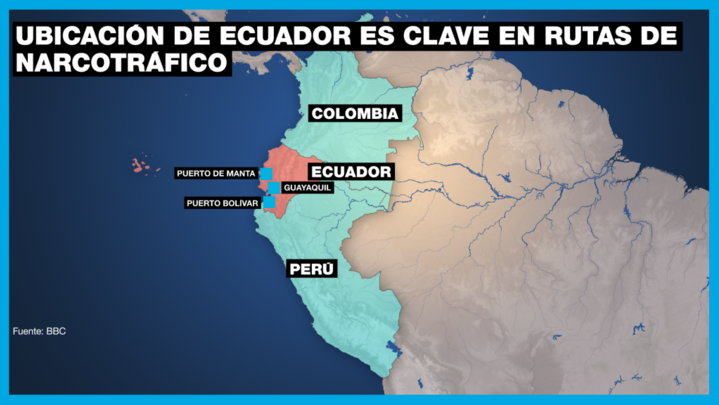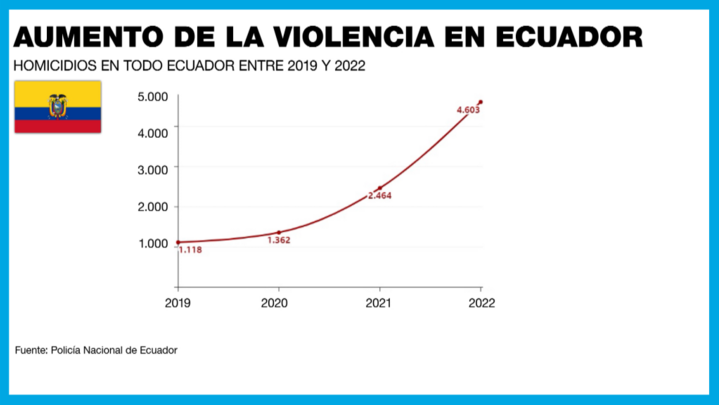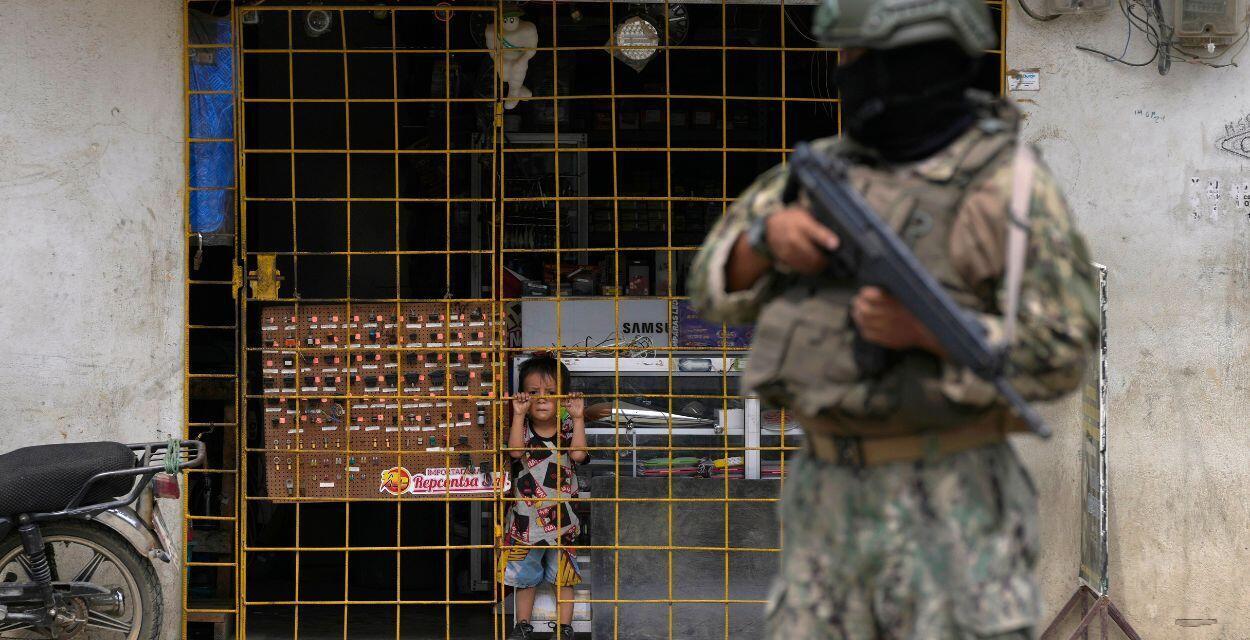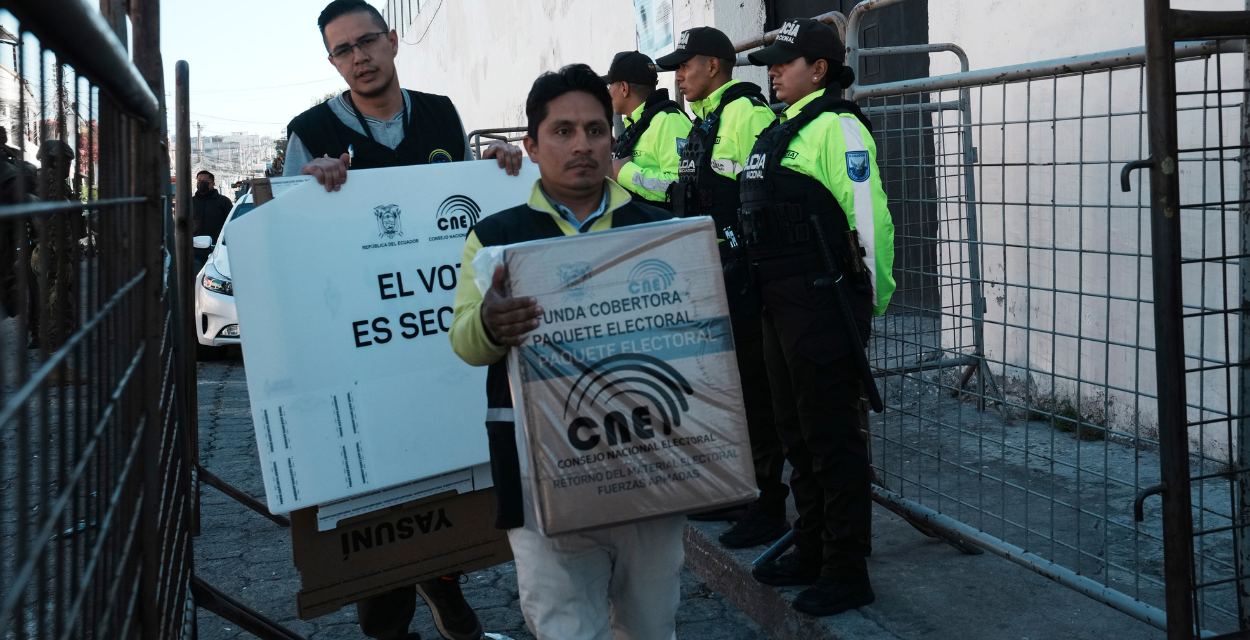The people of Ecuador who stand before the ballot box this Sunday to elect a president must choose not only their preferred ideological option, but also the political system that will define their destiny in economic, social and security terms.
On August 9, many voters learned through the country’s news of the assassination of Fernando Villavicencio, a former journalist, ex-congressman and presidential candidate who said Ecuador had become a “narco-state.” The attack sparked international and national concern among people living amid a crime spree of extortion, kidnapping and murder that has become frequent over the past five years.
When looking for reasons for the insurgent violence that Ecuador is experiencing today, there are many factors, none of which are conclusive. Experts have cited official decisions from the past, whether the country was an actor in the global increase in drugs, a weak state response to crime, or the country’s geographic location.
During the Rafael Correa administration, between 2007 and 2017, the country experienced economic growth with an increase in police surveillance and an increase in raw materials.
In 2009, Korea canceled the lease of a US military base in the port city of Manda and stopped cooperating with the International Narcotics Agency. The site helped fight drug trafficking in one of the most productive and trafficked areas.
The site’s closure has eased security at Colombia’s border and eased the supply of drugs into Ecuador, which lies between Colombia and Peru, two of the world’s largest producers of cocaine, the US Office of National Drug Policy said. Implementation (Ondcp).
When Lenin Moreno came to power, his priority was to pay off the foreign debt, while budget cuts affected the public forces and were reflected in the rise of criminal gangs, which extended their territorial control to port cities to handle drug shipments.
While this was going on, in neighboring Colombia, the government signed a peace deal with the FARC, the Revolutionary Armed Forces of Colombia. Its opponents are still on the Ecuadorian border todayDrug trafficking fuels armed conflict.
InsightCrime has documented drug traffic routes from Colombia, the world’s leading coca producer, through Ecuador and its ports to Mexico, the United States and Europe. The agency also documented labs on the Ecuadorian side of the border.

In addition, the involvement of drug cartels from countries such as Mexico and Colombia is increasing Albania Financing the activities of local gangs has created a war for territorial control that has plunged people into unprecedented violence. According to InsideCrime, the Soneros, who operate alongside Mexico’s Sinaloa cartel, have the port city of Manta.
“We are no longer facing common crime, but we are facing the world’s biggest drug cartels,” President Guillermo Lazo admitted last year.
Initially, the clashes between these gangs were confined to prisons, but the violence took place on the streets. Rasquina, the leader of the Soneros, whose real name was Jorge Luis Zambrano, was murdered in 2020. It would also have contributed to an increase in violence among small criminal gangs that have started a dispute over power and territorial control in Ecuador after the vacuum left by his death..
Prisons became recruiting centers for crime. The prison population was 11,000 in 2009 and will rise to 36,500 in 2021, according to the National Comprehensive Care Service for Liberty and Adolescent Offenders (SNAI).
Also, from prisons where there have been bloody episodes of violence in recent years, criminal gangs have started extorting and kidnapping businessmen and people to finance their criminal activities.

Violence invades politics
Fernando Villavicencio, in his last televised interview on the morning of August 9 from the Ecuavisa studio, repeated “The police know”. The former investigative journalist has openly denounced links between the police and the country’s criminal gangs, while promising to clean up the public forces once he becomes president.
His plans to fight crime included building a prison in the middle of the Amazon to hold criminals. His killing as he left a political rally in Quito was the third in a series of assassinations of political leaders this year.
Earlier, on Sunday July 16, Rider Sánchez Valencia, a legislative candidate for Esmeraldas, was assassinated as he left a political meeting in the northern province of Esmeraldas. Four civilians approached his vehicle and when he tried to flee the ambush, they shot him dead. Sánchez Valencia was a member of the SUMA coalition led by presidential candidate Otto Sonnenholzner. Officials said the motive behind the crime was attempted robbery.
On Sunday, July 23, Agustin Intriago, the popular mayor of Manta, re-elected in February, was assassinated while supervising public works. He was reportedly shot five to six times during the tour.
Ariana Estefania Sanke, a young soccer player whose career was on the rise and who was talking to the mayor when they were attacked, died in the attack. Four others were injured. The cause of the attack has not been officially ascertained.
Quito Officials: “We Are Wandering as a Country”
On August 14, when the country was still digesting the death of candidate Villavicencio, another crime hit the national front pages. Pedro Briones, leader of the Revolución Ciudadana party, a political movement linked to former President Rafael Correa, was shot dead at the door of his home in San Mateo de Esmeraldas.
Despite these deaths, the campaign continued, but the main candidates were equipped with bulletproof vests and reinforced security.
In an interview with France 24, Quito’s Secretary of Defense, Carolina Andrade Quevedo, admitted that the state lacked the capacity to respond to the security situation.
Thousands of people have been killed in recent years. The country has experienced an unexpected decline. No responsiveness, no leadership, no direction on the part of the state, the official admitted.
From the government side, President Guillermo Lasso has decreed several states of emergency and ordered the military to be on the streets to control gangs and criminal gangs, so far without success.
“The escalation of violence is due to a permanent process of denial on the part of the authorities,” Andrade assured. Starting with the most important and the most important: the penetration of organized crime in different places of power.
A US State Department report noted that drug-related corruption is “a problem within Ecuador’s public security forces.”

The National Police recorded 3,568 violent deaths in the first six months of this year, compared to 2,042 in the same period in 2022. Political power”, Andrade added, acknowledging that citizens are completely defenseless.
Uncertainty Economics Course
According to the World Bank, the Ecuadorian economy has not recovered from the contraction caused by the epidemic (-7.8% of GDP), which revealed structural weaknesses such as oil exports, informality, unemployment and large gaps in access to public services. .
The economy, which has been based on oil exploitation since the 1970s, is no longer enjoying the boom it did ten years ago. Crude oil to generate $10,000 million in 2022, 10% of gross domestic product, GDP. Other sectors like bananas, roses, cocoa and shellfish also contribute to the GDP.
Since 2021, President Guillermo Lasso has dealt with an economy weakened by rising global prices that have sparked massive anti-government protests, followed by several cuts in official subsidies after the war in Ukraine.
Another challenge facing the President is unemployment: out of 8.47 million economically active population, only 37.7% of the population has adequate employment, according to the National Institute of Statistics, INEC.
Additionally, as a result of the violence and extortion, many businesses have begun closing or closing operations for fear of becoming another victim of crime.
It is trying to boost the country’s economy and overcome lack of investment, low productivity and dependence on oil prices. By 2022, GDP growth is expected to be 2.9% according to the World Bank.
“Fiscal discipline will be critical to prevent high oil prices, which delay improvements in spending efficiency, perpetuate macroeconomic imbalances, and prevent the formation of fiscal buffers,” the World Bank says.

Despite improved reforms in recent years, the country also lacks access to international financial markets, which is why it has not been able to attract foreign investment needed to develop projects in various sectors.
A reflection of this is the increase in the number of Ecuadorians deciding to immigrate to the United States. Between 2021 and 2022, at least 189,000 Ecuadorians left the country, according to the fact-checking organization Ecuador Verifica. The figure is higher than all data from the past 12 years, and shows a new wave of migrants fleeing the country amid rising homicides. This is According to Inside Crime, the rate will increase by nearly 500% between 2016 and 2022..
On Sunday, the ballot printed before Villavicencio’s death will feature the names of eight candidates, including the slain politician, and will serve as a bitter reminder that Ecuador was not the peaceful country it once was.
With AP, Reuters and local media
This post was originally published on this site be sure to check out more of their content.






